#invasive species
Explore tagged Tumblr posts
Text
Reseed and plug with natives.

I don't know. I just don't know
63K notes
·
View notes
Text
"Tilia is a vest-wearing conservation dog that the 444-acre [Mequon] nature preserve relies on for vital conservation and restoration work.
The dog’s responsibilities include sniffing out invasive and endangered species in the prairies, forests, and wetlands of Mequon.
Conservation dogs have become more commonplace in wildlife organizations, tapping into their astonishing scent-detecting abilities.
“Dogs in general already have up to 200 million olfactory sensors,” Cory Gritzmacher, the director of operations at the nature preserve, told Wisconsin Life.
Humans, on the other hand, have about 5 million.
“[Dogs are] already set up and designed for scent detection,” Gritzmacher added. “It’s really just finding a dog that’s motivated, that wants to do it on a regular basis and is excited to do it.”
Tilia was the pup for the job.
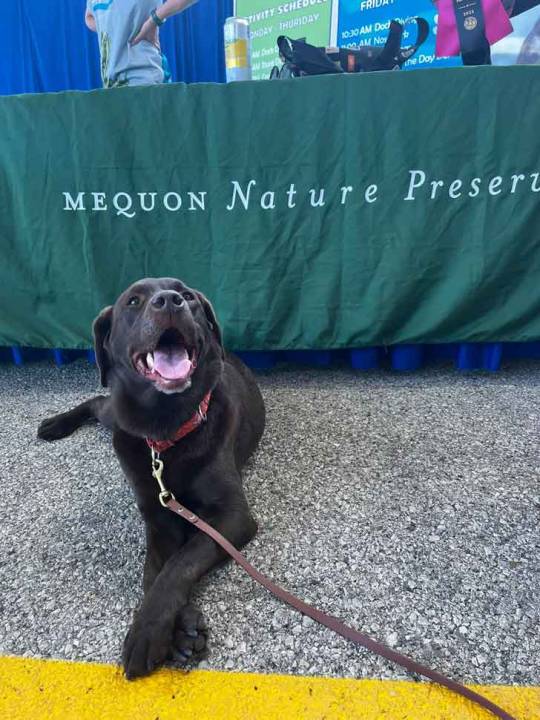
One of her main roles is to detect wild parsnip, an invasive species that staff removes once it is found on the property.
Compared to humans, Tilia can find parsnip in its first year, while it’s still close to the ground and camouflaged by other plants. This is vital, since parsnip will start to spread rapidly by the time it reaches its second season in the preserve.
Studies show that the estimated damage caused by invasive species has cost the United States around $120 billion annually, as it impacts agriculture, recreational industries, and wildlife management.
By catching invasive species that take hold of local flora and fauna early, Tilia achieves something no humans can.
“The best trained volunteers or staff in the world won’t even be able to find what a canine can,” Gritzmacher said. “That’s the pretty impressive part of it. And who doesn’t want to go to work with a dog?” ...
Tilia began training as a puppy, and now nearly seven years old, she’s a pro at scent detection — which all started with some treats hidden in cardboard boxes...
“As she continues to hit on the correct scent, then she gets rewarded. So, she’s going to get paid again. We do our work, we get paid. She does her work, she gets paid.”
Tilia can also spot Blue-Spotted and Easter Tiger Salamanders, which are endangered in the area. Her other scents include Wood Turtle and Garlic Mustard.
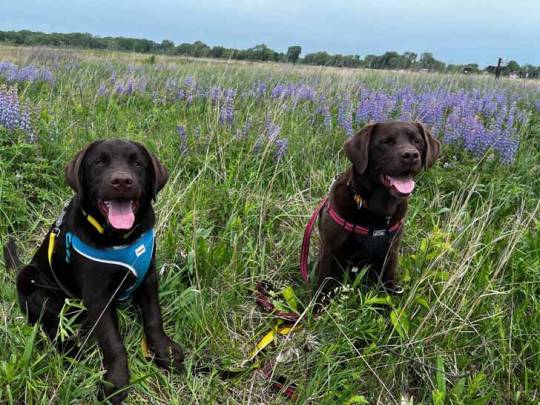
Of course, her workload remains balanced with time off. Her official owner is the director of Mequon Nature Preserve, who is happy to embrace her as the family dog when she’s not out sniffing.
But Gritzmacher, who trains and works alongside Tilia, adores her, not only for her companionship, but for the miracles she is able to work as an asset to Wisconsin’s conservationists.
“Canines are going to start to play a huge role in the conservation field just because of their amazing detection skills,” Gritzmacher said, “especially when resources are limited, staff is limited and you have to search potentially thousands of acres or miles.”
In fact, Tilia was joined by a partner in crime a few years ago: Timber, another chocolate lab who is actually the offspring of Tilia’s sister.
By following in her pawprints, Timber’s “powerful nose will be a key tool” in the preserve’s “land restoration efforts,” according to its website.
“For years, scientists have tried to replicate the power and efficiency of the canine nose,” Mequon Nature Preserve adds on a webpage for Tilia and Timber.
“The results keep coming back the same: The canine nose is second to none. Coupled with an insatiable desire to work and serve, Tilia and Timber help us find things humans often can’t.”"
-via GoodGoodGood, December 2, 2024
#dogs#labrador#chocolate lab#labrador retriever#conservation#endangered species#invasive species#biodiversity#united states#wisconsin#nature preserve#ecosystem#working dogs#dogblr#good news#hope
5K notes
·
View notes
Text

2K notes
·
View notes
Text
I would like this for England plz

717 notes
·
View notes
Text
Five years after a massive effort to remove invasive mice and rats from Lord Howe Island, the unique ecosystem is experiencing what is being called "an ecological renaissance" as the endangered flora and fauna recovers.
Lord Howe Island woodhens were reduced to only 30 individuals in the 70s due to egg predation from the invasive rodents, but in just the last five years the population has jumped from 200 to over 2,000.
From the article:
"It's just amazing, the changes that have happened in the forest--it has blown me out of the water really. I thought it would change but I just can't believe how quickly things have been happening."
#conservation#biodiversity#bird conservation#island conservation#plant conservation#ecology#hope#hopepunk#environment#invasive species#conservation works#conservation success stories#radical optimism#endangered species#ecological grief#ecoanxiety
1K notes
·
View notes
Text

Borshevik
#artist#my art#artists on tumblr#floral pattern#Heracléum#invasive species#so poisonous#wery dangerous
2K notes
·
View notes
Text
Dandelion News - March 1-7
Like these weekly compilations? Tip me at $kaybarr1735 or check out my Dandelion Doodles! I’m almost finished with February’s doodles, sorry for the delay
1. Charles Darwin saw this Galápagos bird on Floreana Island in 1835, then it wasn't seen again for almost 200 years

“The Galápagos rail […] had been deemed locally extinct – and due for reintroduction from other Galápagos islands – until it was seen during recent fieldwork. [… “R]emove the invasive threats, and native species can recover in remarkable ways,” says Island Conservation’s Paula Castaño.”
2. Bill supporting free student meals passes through Utah legislature

“[The bill] would move thousands of students who qualify for reduced-cost school meals into eligibility for free breakfasts and lunch. […] H.B. 100 secures $2.5 million from the state’s education budget to help students from families who do not qualify for federal aid like SNAP or TANF.”
3. Indigenous leaders sign landmark carbon deal in Philippines

“[The deal establishes] the country’s first locally owned forest carbon project. The project, which places a monetary value on the potentially climate-warming carbon stored in trees, aims to halt deforestation through the sale of carbon credits — effectively making the forest more valuable alive than cut down.”
4. Powerful Speeches From Trans Dems Flip 29 Republicans, Anti-Trans Bills Die In Montana
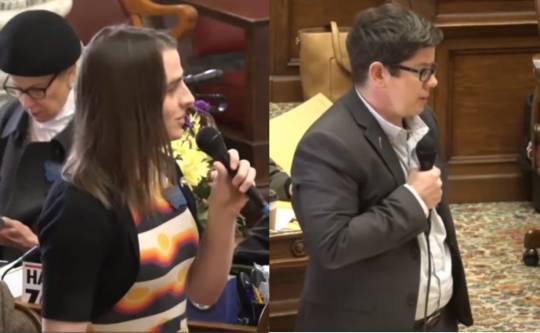
“Transgender Reps Zooey Zephyr and SJ Howell delivered powerful speeches on the Montana House floor on Thursday. Republicans defected en masse to join them in voting against anti-trans bills. […] One Republican even took the floor to deliver a scathing rebuke of the bill’s sponsor.”
5. Illinois proves states have a lot of power to advance clean energy

“[Two new bills] aim to evaluate the state’s current power grid, make it easier to expand the transmission system, and add a ton of new battery storage[…. Illinois already] has one of the cleanest grids in the nation thanks to bountiful nuclear power.“
6. ‘I feel real hope’: historic beaver release marks conservation milestone in England

“”We are visibly, measurably recovering nature and that is so exciting[….]” [… In] recent years, beavers have been returning to our waterways via licensed releases into enclosures and some illegal releases. […] Last week, the government announced that, with a licence, it is now legal for conservationists to release beavers into the wild, with no enclosures necessary.”
7. One of South Dakota’s largest wind farms just got the green light

“Invenergy says the new South Dakota wind farm will pump $78 million into landowner payments over the next 30 years, while local governments will see $38 million in property tax revenue. [… T]he project is expected to create 243 construction jobs and support eight long-term operational roles.”
8. The Antarctic ozone hole is healing, thanks to global reduction of CFCs

“[The] new study is the first to show, with high statistical confidence, that this recovery is due primarily to the reduction of ozone-depleting substances, versus other influences such as natural weather variability[….] "By something like 2035, we might see a year when there's no ozone hole depletion at all in the Antarctic.””
9. Monarch butterflies wintering in Mexico rebound this year

“The number of monarch butterflies wintering in the mountains west of Mexico City [doubled] in 2024 despite the stresses of climate change and habitat loss[….] Tavera Alonso credited ongoing efforts to increase the number of plants the butterflies rely on for sustenance and reproduction along their flyway.”
10. Pip in final egg means bald eagles Jackie and Shadow should soon be parents of triplets
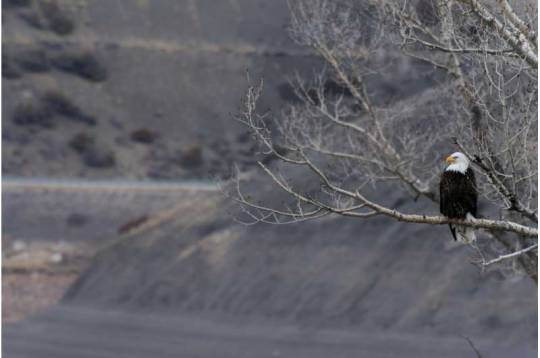
“Triplets would be unprecedented for the eagles in a decade of observation. […] The [third] eaglet is "actively working on getting out of the egg." […] The two already-hatched chicks, who will be named by the public in the days to come, are "looking much stronger than they were even yesterday[….]””
February 22-28 news here | (all credit for images and written material can be found at the source linked; I don’t claim credit for anything but curating.)
#hopepunk#good news#galapagos#birds#invasive species#utah#free lunch#school#education#indigenous#philippines#carbon capture#us politics#transgender#trans rights#republicans#zooey zephyr#illinois#clean energy#electricity#nuclear power#beaver#england#wind farm#wind energy#ozone#ozone layer#monarch butterfly#mexico#bald eagle
656 notes
·
View notes
Text
Invasive Species and Xenophobia
Invasive species are complicated! People have a lot of feelings about them, positive and negative. Are plants that move "invaders" "colonizing", "immigrants", "citizens"? What does it mean to kill species that are from somewhere else? What if that species legitimately makes a poor neighbor and causes extinctions in other, native species? This complex, culturally-loaded issue is a foundational issue behind a lot of plant conservation and restoration.
This is a juicy and still actively disputed topic! The Guardian recently had a big article on colonialism in Botany, (tbh her views are dated and reductive, imo) and it’s come up again this week, to much hostility (cw: reddit). Yes, my region's native plant restoration came from literal nazis, but also, the impacts of some invasive species are real, not figments of a racist imagination. How do we balance these issues? What does ethical invasive management look like?
Since it’s such a juicy topic, I wanted to offer a few fun readings to share:
The Native Plant Enthusiasm: Ecological Panacea or Xenophobia?, Gert Gröning and Joachim Wolschke-Bulmahn, 2004, Arnoldia.
THE CLASSIC 20th century German nazis and native plants paper. Made a huge splash when it came out, and you will still encounter people who paint all native plant stuff with this brush. Summary: yeah the nazis loved their native plants and used them as part of their conquering process. Also, the first prairie plantings ever, located in Chicago, were done by a racist probable-nazi for racist reasons, full stop. I’ll let him speak for himself: “The gardens that I created myself shall… be in harmony with their landscape environment and the racial characteristics of its inhabitants. They shall express the spirit of America and therefore shall be free of foreign character as far as possible… the Latin and the Oriental crept and creeps more and more over our land, coming from the South, which is settled by Latin people, and also from other centers of mixed masses of immigrants. The Germanic character of our race, of our cities and settlements was overgrown by foreign character. The Latin spirit has spoiled a lot and still spoils things every day.” - Jens Jensen
Botanical decolonization: rethinking native plants, Tomaz Mastnak, 2014, Environment and Planning D: Society and Space
Rather than viewing native plant plantings as an act of racially-pure occupation, Mastnak positions native plants in California as a decolonization of the sub/urban lawn. Uses a lot of quotations from 16th century English philosopher Francis Bacon, and is heavy on the philosophical musings.
From killing lists to healthy country: Aboriginal approaches to weed control in the Kimberley, Western Australia by Bach et al., 2019, Journal of Environmental Management.
This paper talks through some of the native vs invasive debate, and offers a different perspective on how to approach to plant invasive management based on cultural relations, rather than country of origin or behavior.
Beyond ‘Native V. Alien’: Critiques of the Native/alien Paradigm in the Anthropocene, and Their Implications, Charles R. Warren, 2021, Ethics, Policy, & Environment
DENSE but thorough, if you want to follow the entire history of the native/invasive debate, this has you covered. The most interesting stuff, in my opinion, is the discussion of invasive denialism, IE: the impasse of “You’re just being racist!” Vs “You know nothing about ecology!” I recommend the Discussion, which starts on page 13.
#invasive species#native plants#ecology#history#i had to put a reading list together for lab this week#so you get to reap the benefits#the children yearn for the mines#except its me#the research scientist yearns for the syllabi mines
643 notes
·
View notes
Text
This article was originally published on March 19, 2025
This article was originally published on March 7, 2025
The international conservation initiative, Island-Ocean Connection Challenge (IOCC), led by Island Conservation, Re:wild, and UC San Diego’s Scripps Institution of Oceanography, proudly welcomes three of New Zealand’s most ecologically rich islands into its ambitious effort to restore and rewild 40 globally significant island-ocean ecosystems by 2030. The addition of these three projects brings the total number of committed island-ocean ecosystems to twenty. (February 20, 2025)
#good news#environmentalism#science#invasive species#rewilding#environment#nature#conservation#ecology restoration#ecological restoration#animals#new zealand#new zealand islands#animal rights#animal welfare#animal conservation#nature conservation#climate change#climate crisis
384 notes
·
View notes
Text
I am a little frustrated. And it's a little more frustrated than is warranted, probably.
You see, I got permission from one of my local parks department to start removing invasive Himalayan blackberry, Scotch broom, English Ivy, etc, and to start planting natives in their place. I am focusing on plants that are good for pollinators, and particularly native rubus species, since the Himalayan blackberry & Scotch broom are good for creating lots of flowers (while crowding literally everything else out) . I cleared out a spot, planted blackcap raspberry, thimbleberry, salmon berry, elderberry, spring beauty and a few others, including some native asters and golden rods. All natives, all carefully placed where they'll get the amount of light they need, all of which are going to thrive with the moisture levels and soil conditions of the site.
I go out there today and some well-intentioned individual has stuck a freaking ponderosa pine at the edge of where I've been working. Which is annoying, because ponderosas like drier, hotter conditions and more sun- which is why they're mostly on the EAST side of the cascades, not adjacent to a wetland and receiving half a day of sun on the westside. They are found in the Puget Sound region- but almost entirely on gravelly soils that are very well drained and in full sun.
If it lives, it'll get really tall and shade out the actually-native-to-specifically-this-place plants, and it's just really annoying because a) they planted it in the wrong place for the tree itself and b) they planted it in the area that I had just planted carefully chosen species that are actually very well suited to the area & local conditions.
And the ponderosa is an unhealthy shade of yellow on top of it all.
If you're going to guerrilla garden, at least do enough research to a) make sure they're native to the specific habitat you're planting them into, and b) are giving them the conditions they need to thrive. And maybe don't mess with other people's carefully considered work while you do it!
222 notes
·
View notes
Text
Me: Cats are an invasive species that, when allowed to free-roam, slaughter massive numbers of native wildlife worldwide, are frequently subjected to horrible diseases, injuries, and deaths outdoors, and should only be allowed outdoors on leashes or in catios.
Also me: *trills to Random Outdoor Cat in the hopes it will come over so I can pet it*
2K notes
·
View notes
Text
better invasive species as promised

#left 4 dead#left 4 dead 2#l4d#l4d2#zoey l4d#bill l4d#louis l4d#francis l4d#coach l4d2#nick l4d2#rochelle l4d2#ellis l4d2#chris doodles#invasive species
296 notes
·
View notes
Text

A muscovy duck (Cairina moschata) and ducklings swimming near Pompano Beach, Florida, USA
by Lee J. Sanders Photography
#muscovy duck#juvenile#ducks#waterfowl#birds#cairina moschata#cairina#anatidae#anseriformes#aves#chordata#wildlife: florida#wildlife: usa#wildlife: north america#invasive species
525 notes
·
View notes
Text
"Two wild kiwi chicks were born near Wellington, New Zealand, about a year after a reintroduction program began in the city, the Capital Kiwi Project announced last week. The fluffy, brown babies are the first to be born near the country’s capital in at least 150 years.
“This is very special for the team, which has been working hard for the last few years,” project founder Paul Ward tells the Agence France-Presse. The chicks are a “massive milestone for our goal of building a wild population of kiwi on Wellington’s back doorstep.”
These flightless, chicken-sized birds were once abundant across New Zealand, with the nation’s five species numbering an estimated 12 million individuals in total. But nonnative predators and habitat loss caused their populations to plummet. Today, approximately 68,000 kiwis remain....
Conservation and reintroduction programs, including the Capital Kiwi Project, have been working to restore a large-scale wild kiwi population for years. In 2022, the organization released 11 kiwis into the wild in Makara, a suburb about seven miles west of Wellington. Between February and May of 2023, another 52 birds were released, and 200 more are slated to be released over the next five years, reports Eva Corlett for the Guardian.
Along with reintroduction efforts, the project aimed to reduce threats from European stoats, also known as ermines. The mammals were brought to New Zealand in the 19th century in an attempt to eradicate another introduced creature: rabbits. But these weasel-like stoats are voracious predators and kill many of New Zealand’s native species, including kiwi chicks. Only about 5 percent of kiwi chicks survive to reach breeding age in areas where predators are not controlled, largely thanks to stoats. In areas under management, however, 50 to 60 percent survive. Knowing this, conservationists worked with 100 landowners across the bird’s 60,000-acre habitat to install 4,600 stoat traps.
Of the 63 adult kiwis now roaming the hilly farmlands of Makara, only about a quarter are being monitored—meaning more chicks will likely hatch in the near future. Conservationists will continue monitoring the two new chicks, though Ward tells the Guardian they still have a long way to go before they’re fully grown...
Over the years, the long-beaked birds have become a national symbol of New Zealand, with people who hail from the country often referred to as kiwis. The animals also hold special importance to the Māori people of New Zealand, who have cultural, spiritual and historic associations with the birds. Even the New Zealand dollar is sometimes referred to as the kiwi, and the bird is featured on the country’s dollar coin."
-via Smithsonian Magazine, December 6, 2023
#aotearoa#new zealand#kiwi#kiwi bird#endangered species#birds#ornithology#conservation#invasive species#good news#hope
3K notes
·
View notes
Text
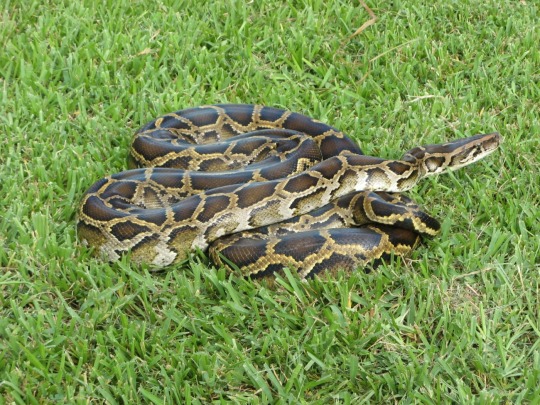
Scientists develop groundbreaking method for detecting DNA of invasive snakes in Florida
Scientists at the University of Florida have developed a pioneering tool to bolster Florida's defenses against invasive species: a DNA-based environmental monitoring test that can pinpoint where they've been, aiding eradication efforts.
Once a nonnative species gets into an environment, it is often too late to get rid of it, and the focus shifts to containment or long-term management. Both approaches come with heavy costs concerning native wildlife and funding, explained Melissa Miller, lead author on the study and an invasion ecologist at the UF/IFAS Fort Lauderdale Research and Education Center (UF/IFAS FLREC). "We hope this novel eDNA sampling tool we have designed will help increase efficiency in invasive species management, allowing for early detection and rapid removal of nonnative species," she said...
Read more:
https://www.sciencedaily.com/releases/2024/11/241122130344.htm
#invasive species#herpetology#florida#animals#nature#science#eDNA#DNA#environment#conservation#snake#reptile
206 notes
·
View notes
Text
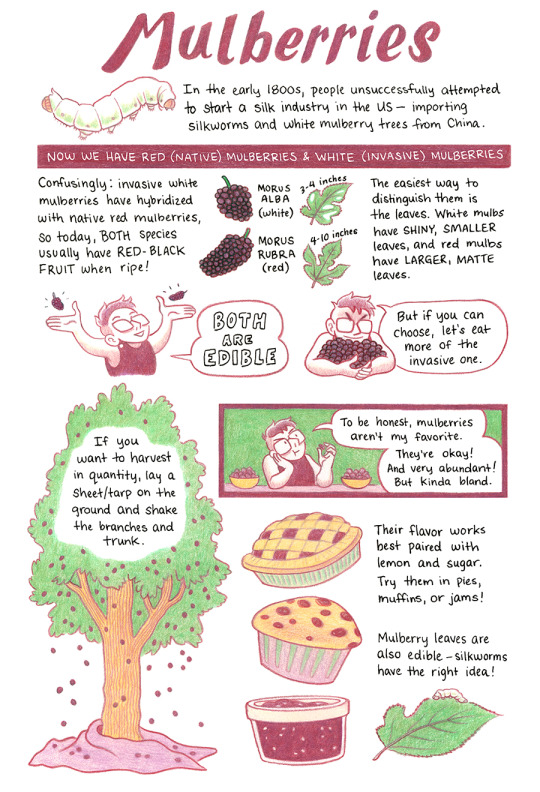
Another sample page from my new fruit-foraging zine, Fruit For Free! If you live in the eastern US, these trees are almost certainly growing down the block from you somewhere.
If you'd like to read the whole comic, covering this and many other types of easily-foraged fruit, you can get it as a free or pay-what-you-want PDF here!
4K notes
·
View notes